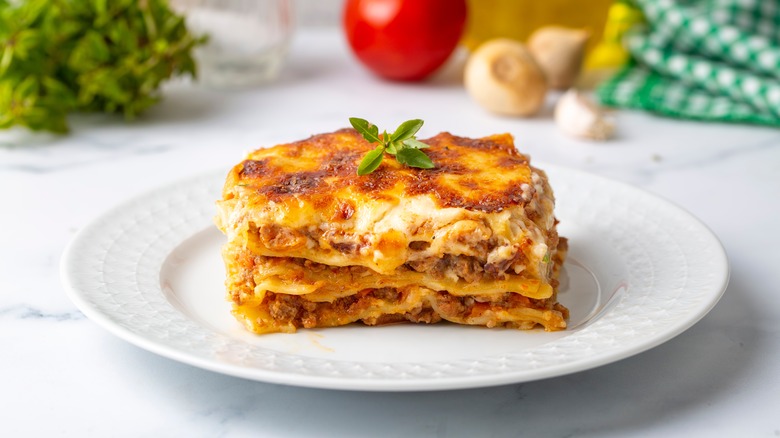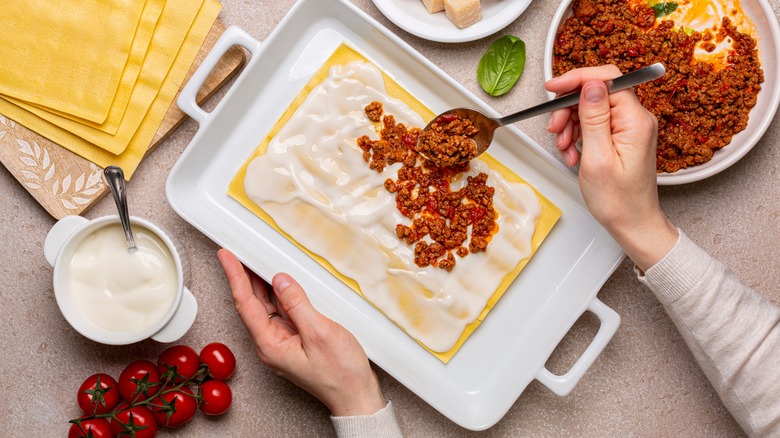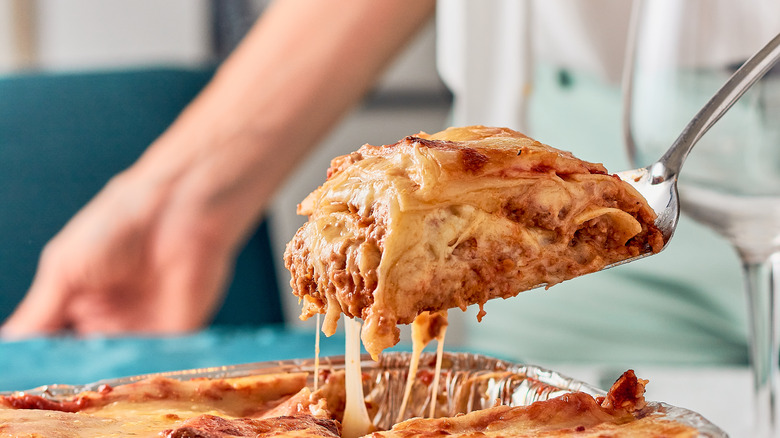The Saucy Ingredient That Will Level Up Homemade Lasagna
If you're making homemade lasagna, chances are your recipe only calls for one type of sauce in addition to mozzarella, ricotta cheese, and lasagna noodles. Unless you're making it vegetarian, bolognese sauce is typically used, but as it turns out, this is the American way of making lasagna, according to the Washington Post. In Italy, lasagna doesn't usually include ricotta and is made up of not one, but two sauces: bolognese and béchamel.
A variation of lasagna made in Naples called lasagna imbottite does include ricotta, however, standard American lasagna (even including its ricotta) is derived from Emilia Romagna-style lasagna. When this recipe became popular stateside, American home cooks used pureed ricotta instead of béchamel sauce. Eventually, people just started using ricotta straight out of the tub.
While lasagna made with ricotta can certainly be tasty, if you want to upgrade the pasta dish next time you make it, consider going the traditional route and using béchamel sauce instead.
Using bechamel sauce in lasagna
Though people often substitute one for the other when making lasagna, béchamel sauce, and ricotta cheese aren't extremely alike. Ricotta is made through the process of heating whey with whole milk and combining it with an acid such as vinegar. The resulting curds are ricotta cheese. Béchamel sauce on the other hand is much creamier. Like ricotta, there's also cooking involved, but it comes together by making a roux with butter and flour and then adding milk. Once reduced and seasoned with salt, pepper, and nutmeg, this mixture becomes béchamel sauce.
In terms of flavor, béchamel typically adds more. When you add it to lasagna, therefore, it'll taste a lot more complex and rich because of the nutmeg and dairy. Plain ricotta is fairly neutral tasting, which is why many lasagna recipes call for mixing it with salt and parsley. Both are cheesy, but béchamel tends to be better at balancing out the acidity of the tomatoes.
Does béchamel sauce make lasagna soggy?
Because béchamel sauce is, well, a sauce and not a cheese, you might assume there's a bigger risk of ending up with soggy lasagna, but that's not the case. While béchamel does add creaminess to lasagna, it's quite thick so it won't make it soggy in the process, so you don't have to account for extra moisture.
The main culprit behind soggy lasagna is excess water, and it usually comes from either undrained pasta or ricotta cheese. Ricotta cheese has a high water content, and when it gets cooked in the oven, the water seeps out, resulting in a watered-down sauce and slippery noodles. This can easily be avoided by using firm ricotta and draining out excess water beforehand, but if you use béchamel instead, you won't have to worry about it at all. Too much sauce can also cause a lasagna to turn out soggy, but as long as you don't layer on the béchamel (or the bolognese) too thick, this shouldn't be an issue.


